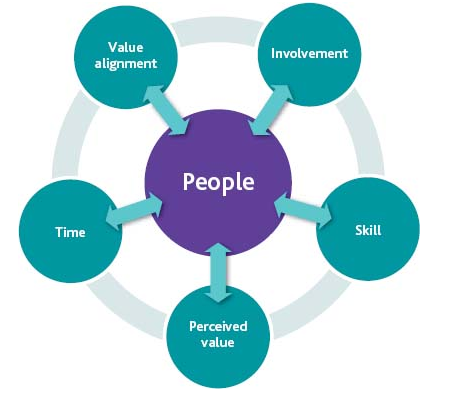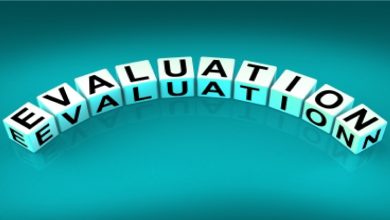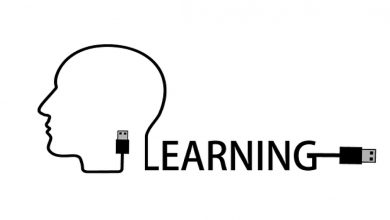Change Readiness
Trainers should be able to change and adjust the program: but what does it mean to be ready to change?

Introduction:
Trainers should be ready to changes, should be open to unexpected elements when he/she works, but what does it mean? In this article, we are going to explore the Change readiness concept.
Content:
Readiness” is a highly subjective term—subjective in scope, subjective in degree, and subjective in the eye of the beholder. What and who needs to be ready? How much ready is ready enough? And whose viewpoint should be used when judging readiness?
Who and what: In current research on change readiness, as well as in consulting advice, there tend to be two primary points of view: 1) readiness is measured by the organization’s financial, material, human and informational resources that can be applied to the change, and 2) readiness is determined by the psychological willingness of affected people to cooperate in bringing the change to fruition. These points of view are not commonly brought together.
Ready enough: Little, if any, attention has been given to the question of how to judge the degree of readiness needed to move forward with a change, and thus, the degree of risk abatement to apply.
Ready in whose eyes: In a large, complex proposed change, readiness may need to be assessed at multiple levels: individuals’, work units’, business units’, organizations’, global partners’, etc.
- Change readiness is a measure of confidence, backed by defensible data and information. This concept acknowledges that readiness is a perception, and is measured both by judgment and by more structurally sound data (subjective and objective observation).
- Change readiness, like change agility, considers three key drivers that impact readiness (Combe, 2014a):
- Cultural readiness—the degree of alignment between cultural norms and the proposed change.
- Commitment readiness—the degree of resolve and ability of the organization, through its leaders at all levels, to see the change through to successful and sustainable completion within the organization’s overall strategic agenda.
- Capacity readiness—the degree to which the organization can bring supportive work processes, historical knowledge and experience, current knowledge, skills and abilities, and resources to bear to aid in the successful implementation and sustainability of the change.
- Change readiness takes into account a compilation of multiple viewpoints to assess not only whether various audiences feel confident in making the change, but also to establish root causes of discomfort.
- Change readiness is carried out through both assessment and decisions/actions based on the assessment. As such, it goes beyond helpful knowledge and assumes action derived from that knowledge.

Being a trainer, then, it is needed to perceive the unexpected elements that could occur in preparing and running a session or an entire program as the value in the process rather than an obstacle and being able to perform an efficient answer to the due situation.
The scheme shows as many elements are contributing to the Change Readiness:
- Involvement: do I feel as a trainer involved in the changes that the unexpected situation is brining? Should I see the interest of the other parties in the changes that as a trainer I should apply and how I can involve them in such a process?
- Skills: do I fell enough competent as a trainer to face unexpected changes provided by unexpected situations? Or I don’t feel ready because I feel insecure?
- Perceived value: Is there belief that the proposed change is a good solution to the problem or opportunity it addresses?
- Value alignment: Does the change align with your ethical convictions?
- Time: Are other priorities on the horizon, or issues that could converge, that might alter the possibility to adapt the program or to adapt the content of the training?
Exercises:
How to apply it in everyday work?
Starting from this model/theoretical background would be interesting to test on our practice in everyday work.
Would be interesting to measure the Change Readiness that we have in the unexpected situation following the due model and assessing using this simple scheme:
Identify one very recent situation in which you adapted your educational program (it would be important that this experience is recent, clear in your mind and maybe that you still have the trainers’ script with your notes).
Fill in the scheme here below with the majority of details that you have in mind or your notes:
| Why the change is needed? | |
| How the change influenced the process? | |
| What were the sensations/feeling that moved you to this change? | |
| How much time did you spend on making the decision? | |
| Which skills did you use for reacting and adapting to the situation? | |
| Why was it possible for you to react? Which were the conditions? |
The assessment would allow you as a trainer to identify which are the conditions that were supporting a positive adaptation to a new reality in a professional way and not only reacting.
Reflection Questions
- Do I feel in danger when I am confronting with unexpected elements?
- How do I assess the suitability of adapting the educational program?
- How I assess my trainer’s competencies in reacting to an unexpected situation?
- Which are the risks that I would not take in adapting to the unexpected situation?
Reference/made by/originally from: Navigating Complexity: A Practice Guide (PMI, 2014) PMBOK® Guide (PMI, 2013b)





